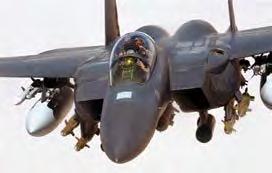
4 minute read
Ab Initio
from SoaringNZ Issue 15
by mccawmedia
Do women pilots want to be taught/considered in the same way as the men through aviation teaching processes? In speaking with several professional air women it is apparent they are rightly of the opinion they should not be treated in any separate way to the men, suggesting coeducational teaching is appropriate. They want to be measured by the same scales and follow the same syllabi of training schedules and certainly do not want or expect either leniency or more exacting standards at testing time. However, they may learn more confidently and achieve better results if their instructional programme is devised, delivered and measured by professional women who they regard well. Questions, Answers & Observations
As with any other activity, significant application is necessary to produce professional skill in instructing. Many volunteer gliding instructors have been captured to be instructors by clubs desperate to swell the ranks of a diminishing and ageing instructor pool. Some may offer their services as a way to obtain cheap air time rather than by any significant demonstrated skill in imparting knowledge. Flights may be more often conducted for the benefit of the instructor than the benefit of the trainee. There is no doubt the general standard of instruction within aviation circles at voluntary level is more often than not less than adequate, yet men thrive within it. This culture does not seem to suit women trainees who are noticeable more demanding about quality and critical when quality is absent.
Advertisement
Effective aviation teaching requires developing skills in inventive ways to explain and demonstrate tasks. This needs to be done in a way meaningful to the individual rather than by textbook rote to groups of people using one premise. The instructors who find ways to relate theory and practical application to other experiences outside aviation will prove more effective than those who confine the teaching process to a purely aviation context. If trainees already have significant skills in riding horses, sailing, skiing, engineering, driving or any number of other activities, finding parallels and relating aviation skills to these activities may achieve better and earlier long lasting results than adhering strictly to teaching off an aviation platform.
Instructors must also be prepared to dismantle skills ingrained by other disciplines to give them acceptable aircraft handling skills or to amend decision-making processes. Understanding the nature of these other established skills and their likely effect on aircraft handling and decision making is paramount. Glibly passing comment that a trainee has the handling skills of a motor boat or bulldozer driver perhaps says more about the instructor and his lack of perception than it does about the lack of skills of the trainee.
I have had the immense privilege of being associated with many women pilots whose skills, tenacity and dedication to achieving their goals often eclipses the men with similar ambitions. They have succeeded despite the barriers imposed by men in what is effectively still a male domain. Who can argue against the need to bolster declining participation in all facets of aviation? If women are alienated from aviation at the outset because of male organisational bias we immediately exclude 50% of the potential from participation. Finding ways to improve and retain the intake of women within aviation is a challenge offering big rewards for the whole industry. This may require a significant change in approach to how it attracts its future participants. It is just as much a challenge for the gliding movement.
Peter is a B Cat instructor with Auckland Aviation Sports Club.
SITUATIONAL AWARENESS
Situational Awareness, or SA, is a term much bandied about by military pilots but it applies to everyone and not just F-15 drivers. On the gliding airfield accidents and incidents can be prevented by members keeping an eye on what is happening around them. For example when you are launching a glider, once the tow rope is connected you have responsibility for ensuring the launch will not conflict with other traffic. Sometimes a cursory look downwind and towards final approach is not enough. What about traffic taxiing to line up on the runway behind you? It pays to have a really good look around.
What about the tow rope? It can be easy to miss a knot if it is close to the rings. Although the glider is the responsibility of the PIC, a second pair of eyes can spot airbrakes open or tail dolly still attached or even canopy unlocked.
If you are helping a student or passenger in the front seat on days when the instructor is busy and remaining in his seat there is no problem if you query the need for ballast or advise him where not to put his camera, drink bottle or other solid items. Be especially vigilant when people not used to gliding are helping out. Make sure they know how to run the wing properly and certainly do not expect them to have the same Situational Awareness as you.
When watching from the sidelines do be aware of things like canopies left open, parachutes placed on the grass (definitely a no-no), or gliders left unpicketed in breezy conditions. We are all capable of lapses especially when we have just returned pumped up from a great flight and we should not feel aggrieved when reminded to protect our assets.
By exercising good Situational Awareness we are just protecting each other.
Children are naturally curious and can slip away from their parent’s care very quickly whilst Mum and Dad are discussing a trial flight with the duty pilot.


Tail dolly?? – A posed shot but this has happened for real before now.










